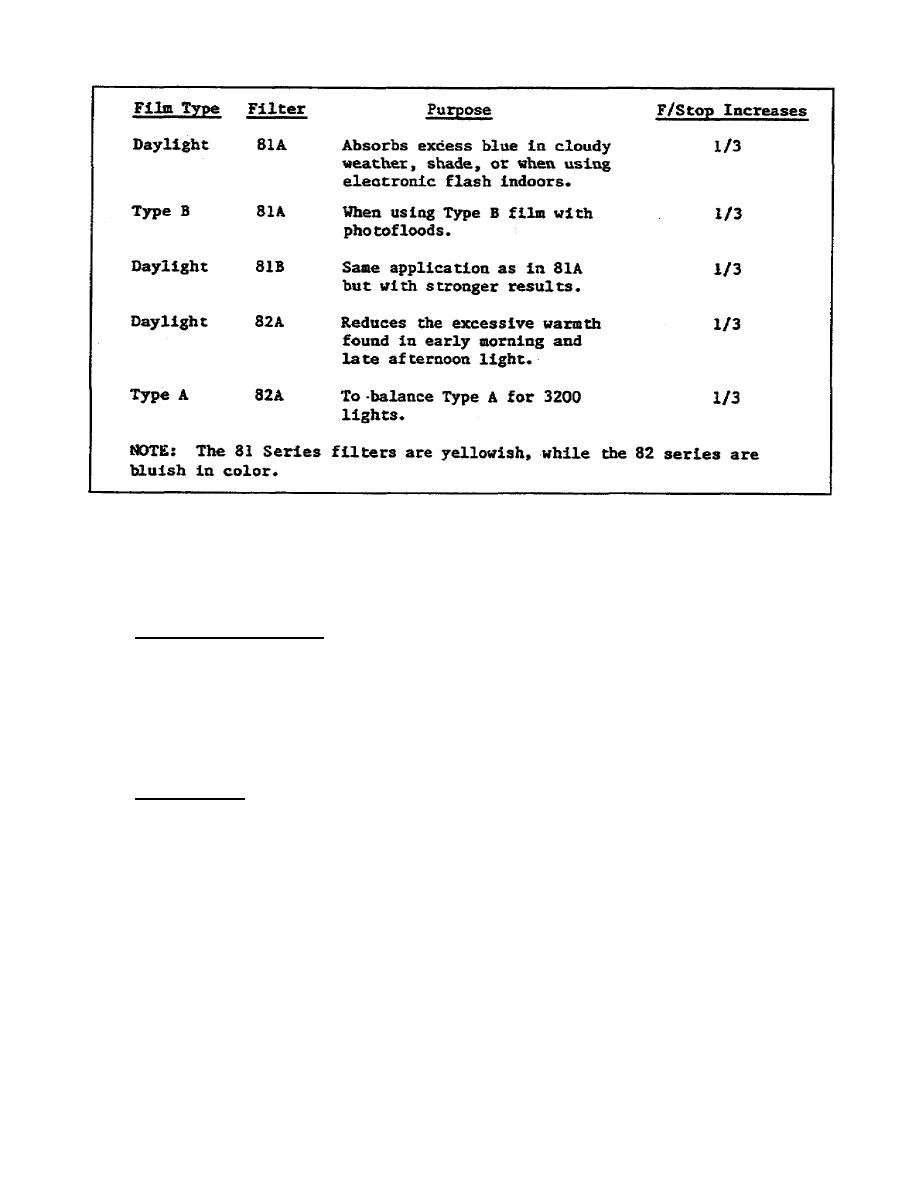
Figure 1-15.
Commonly used light-balancing filters
(4) Special purpose filters.
Special purpose filters have
been
designed for specific types of light-balancing problems.
Figure
1-17
indicates the types of filters that are available.
13.
Mixed Light Sources.
Try to avoid different color qualities of light being mixed when exposing
color film. A color photograph taken in a room with sunlight streaming in
through a window and incandescent lights illuminating the rest of the room
would have mixed light sources.
Film balanced for tungsten light would
correctly render the color of the part of the room lit by the tungsten
lights, but the sunlit areas would tend to be bluish.
14.
Reciprocity.
R e c i p r o c i t y failure effects color emulsions much the same way it
e f f e c t s black-and-white emulsions.
With color the effect is more
apparent.
With black-and-white emulsions, reciprocity failure is
a p p a r e n t only as a loss in density.
An increase in exposure is
u s u a l l y sufficient to offset this lack of density.
With color
films,
there
are
three
emulsions
that
can
be
effected
by
r e c i p r o c i t y failure and each may be effected to a different
degree.
This
results
in
the
usual
density
loss
plus
an
a c c o m p a n y i n g color shift. To compensate for reciprocity failure in
1-27
SS0514



 Previous Page
Previous Page
